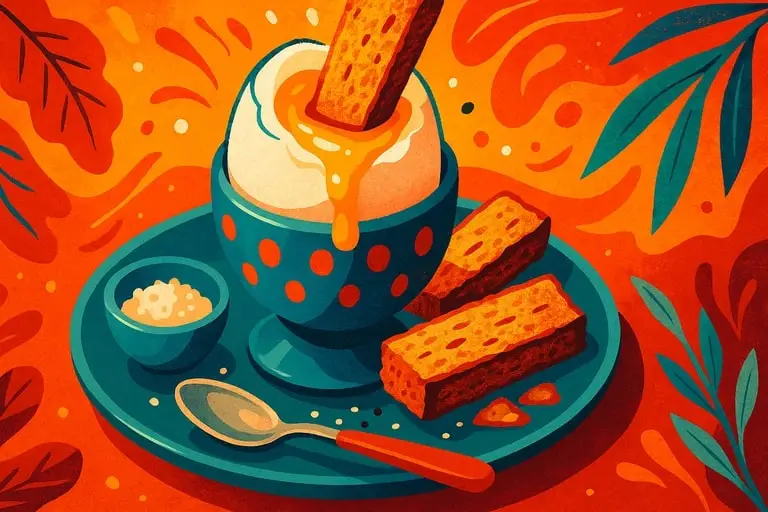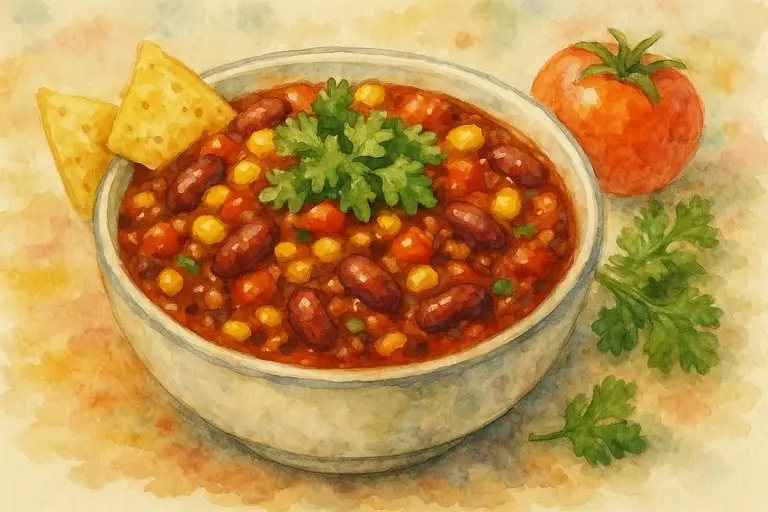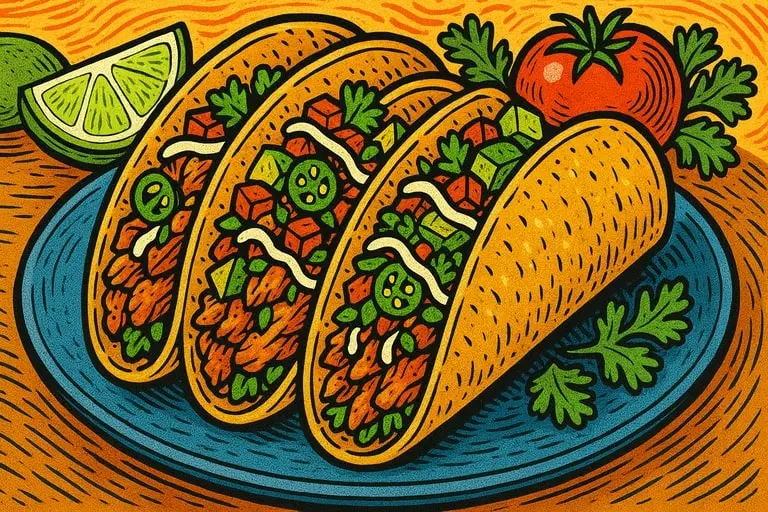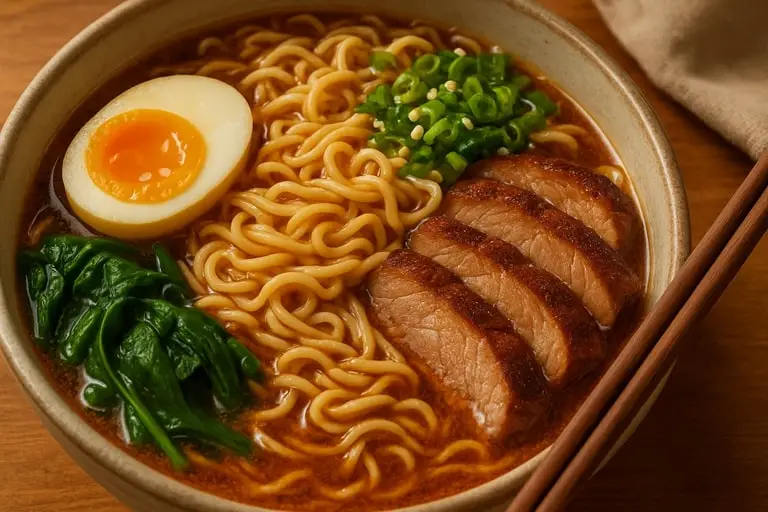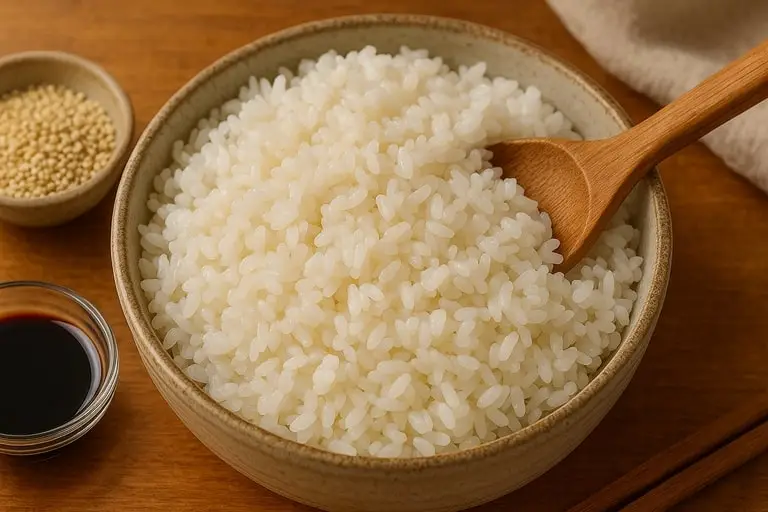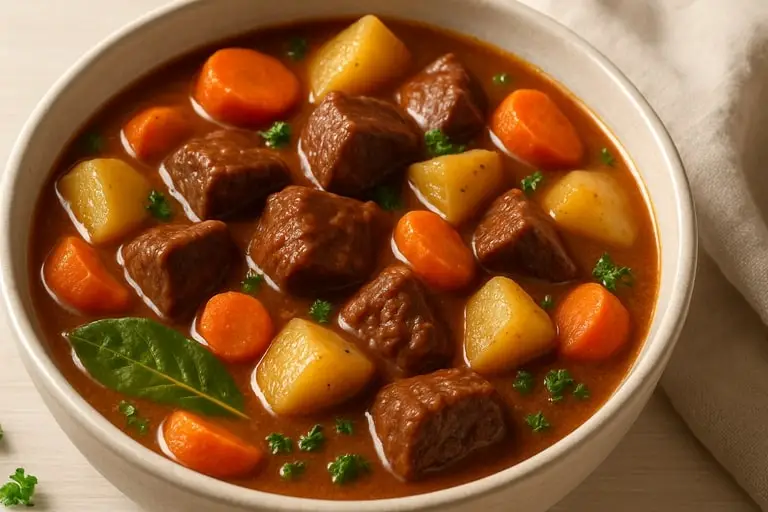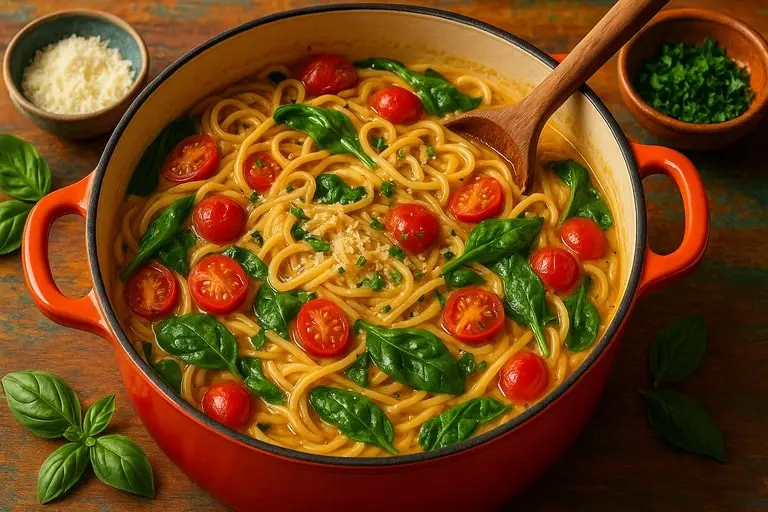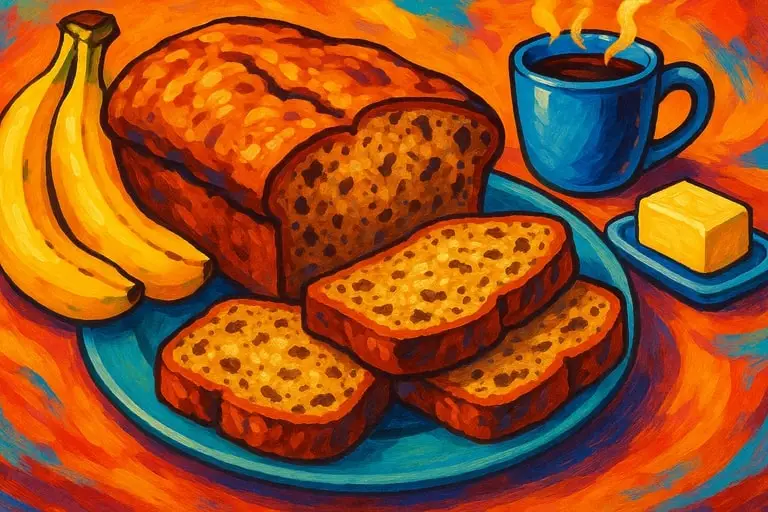The soft boiled egg has long been admired as one of the purest expressions of culinary precision, offering a perfect balance between a set white and a yolk that remains silky and molten. Despite its apparent simplicity, mastering the soft boiled egg demands careful attention to detail, timing, and technique. It is a dish that reveals both the science of cooking and the artistry of restraint, proving that sometimes the most profound culinary experiences come not from complexity but from perfect execution of the fundamentals.
The central challenge of preparing a soft boiled egg lies in controlling temperature and time with absolute precision. Eggs consist of proteins that coagulate at different thresholds, with whites beginning to set around 62°C and yolks thickening closer to 65–70°C. To achieve a soft boiled egg, the cook must strike a balance where the white is firm enough to hold shape while the yolk remains runny. This delicate interplay explains why a few seconds can mean the difference between perfection and disappointment.
Tradition has long associated the soft boiled egg with breakfast rituals. Served in an egg cup, cracked gently at the top, and scooped with a spoon, it provides both nourishment and ceremony. The ritual of dipping toast soldiers into molten yolk exemplifies comfort and simplicity, offering a meal that satisfies not only hunger but also nostalgia. Yet beyond breakfast, the soft boiled egg finds roles in diverse cuisines, from ramen toppings in Japan to garnishes in European salads, proving its versatility across contexts.
The texture of a well-prepared soft boiled egg remains unparalleled. The white, firm but tender, contrasts with the yolk’s richness, which flows like a sauce. This contrast creates complexity within simplicity, engaging both palate and imagination. The sensory pleasure of cutting into a soft boiled egg and watching yolk cascade outward reinforces its iconic status in kitchens worldwide.
Timing remains the defining factor. While recipes vary slightly, most agree that an egg boiled for five to seven minutes strikes the balance necessary for a soft boiled result. The variance accounts for egg size, starting temperature, and altitude, reminding cooks that technique must adapt to circumstance. Such precision underscores why the soft boiled egg is often considered a litmus test of culinary competence: it demands sensitivity, patience, and consistency.
The cultural resonance of soft boiled eggs reflects broader values of simplicity and elegance. In European traditions, they symbolize refinement, often served with minimal adornment to highlight their purity. In Asian cuisines, particularly Japanese, soft boiled eggs marinated in soy and mirin elevate dishes such as ramen, demonstrating how simple technique supports complex flavor systems. These diverse expressions confirm that the soft boiled egg transcends cultural borders, embodying universality through restraint.
From a nutritional perspective, soft boiled eggs provide concentrated nourishment in a small package. They supply high-quality protein, vitamins A and D, and essential minerals such as selenium and phosphorus. Unlike fried eggs, boiling avoids excess fat, preserving the egg’s integrity while maintaining low caloric impact. This nutritional profile reinforces their popularity among those seeking balance between health and pleasure.
Soft boiled eggs also illustrate the science of carryover cooking. Even after being removed from boiling water, residual heat continues to cook the egg slightly, underscoring the importance of immediate cooling when exact doneness is desired. Plunging eggs into ice water halts cooking, preserves texture, and facilitates peeling. This step, while often overlooked, distinguishes amateur attempts from professional results.
The act of peeling soft boiled eggs adds another layer of complexity. Their delicate structure makes shells prone to tearing whites. Techniques such as cracking under water, rolling shells gently, or using slightly older eggs for easier separation highlight how small adjustments impact outcome. Mastery lies in combining respect for fragility with confidence in handling.
Ultimately, the soft boiled egg epitomizes culinary philosophy: simplicity elevated by precision. It demonstrates that mastery requires no elaborate ingredients or techniques but rather attention, discipline, and respect for natural processes. In its restrained perfection, the soft boiled egg reveals the essence of cooking—transforming the ordinary into something extraordinary through patience and care.
Soft Boiled Eggs and Recipe Mastery
Soft boiled eggs demand more than rote instruction; they require an understanding of how variables influence outcome. Every recipe for soft boiled eggs operates within narrow margins where temperature, timing, and handling converge. Mastery lies in interpreting these factors rather than merely following directions, which explains why even experienced cooks revisit and refine their methods.
Water temperature forms the foundation of a soft boiled egg recipe. Some advocate starting eggs in boiling water, others in cold water brought gradually to a boil. Both approaches work, but each produces subtle differences in texture. Starting in boiling water firms whites more quickly, while gradual heating yields slightly softer transitions between white and yolk. Recipe mastery involves experimenting with these approaches until one aligns with personal preference.
Egg size exerts profound influence. A large egg requires additional seconds to reach optimal doneness compared to a smaller one, even under identical conditions. Similarly, eggs taken directly from the refrigerator cook more slowly than those at room temperature. Recipe mastery therefore demands not only precision in timing but awareness of starting variables. This adaptability exemplifies why soft boiled eggs reveal skill as much as technique.
Cooling remains a crucial component. A recipe that ignores rapid cooling risks overcooked yolks as residual heat continues to solidify the center. Immersing eggs in ice water halts cooking instantly, locking in desired texture and making peeling manageable. Recipes that emphasize this step illustrate awareness of both science and practicality, bridging theory with practice.
Seasoning further elevates soft boiled eggs. While salt and pepper remain classics, global cuisines demonstrate the potential of garnishes. In Japan, marinated eggs steeped in soy sauce, mirin, and sake achieve umami richness. In Mediterranean kitchens, drizzles of olive oil and sprinkles of za’atar or sumac bring brightness. These variations prove that even the simplest recipe benefits from cultural imagination, transforming a single ingredient into countless expressions.
Pairings extend recipes beyond the egg itself. Toast soldiers dipped into molten yolks exemplify British breakfast tradition, while rice bowls topped with halved eggs capture Japanese culinary identity. Salads garnished with soft boiled eggs gain richness and depth, their yolks serving as natural dressings. Each pairing demonstrates how the soft boiled egg adapts seamlessly into larger compositions.
Recipe mastery also includes problem-solving. Cracked shells during boiling, uneven doneness, or stubborn peeling challenge even skilled cooks. Solutions—pricking shells with a pin to release air, using gentle boiling rather than vigorous rolling, or choosing slightly older eggs—reflect practical wisdom accumulated through experience. Recipes that anticipate these issues exemplify mastery, offering guidance beyond mere instruction.
Modern adaptations further expand the repertoire. Precision tools such as sous vide circulators eliminate guesswork, holding eggs at exact temperatures for consistent results. While less traditional, these methods embody the same principle of control that defines classic recipes. By merging technology with tradition, soft boiled egg recipes remain relevant in contemporary kitchens.
The role of soft boiled eggs in professional cooking also deserves mention. Chefs employ them not only as standalone dishes but as integral components of composed plates. Their runny yolks enrich sauces, their glossy halves decorate plates, and their flavor harmonizes with proteins, grains, and vegetables. Recipes that integrate soft boiled eggs illustrate how simplicity enhances complexity, reinforcing their value in fine dining.
Ultimately, recipes for soft boiled eggs embody the interplay of control, adaptability, and creativity. They demand sensitivity to variables while rewarding experimentation. Through practice, cooks discover that perfection lies not in rigid adherence to rules but in understanding how principles interact. Recipe mastery thus transforms the soft boiled egg from humble ingredient into a symbol of culinary insight.
Soft Boiled Egg and Breakfast Rituals
The soft boiled egg holds a privileged place within breakfast rituals, where its combination of nourishment, ceremony, and comfort defines morning meals across cultures. Beyond taste, it symbolizes rhythm, grounding daily routines in ritualized simplicity. Understanding its role in breakfast highlights how food shapes not only energy intake but also psychological well-being and cultural identity.
In Western traditions, breakfast with soft boiled eggs often begins with the egg cup, a vessel designed to elevate a simple ingredient into ritual. Cracking the shell gently, peeling away the crown, and dipping toast soldiers into golden yolk transforms the act of eating into ceremony. This ritual fosters mindfulness, slowing the pace of mornings and creating space for connection between food and self.
In Japan, the soft boiled egg manifests as ajitsuke tamago, marinated in soy, mirin, and sake before accompanying ramen or rice. Its presence at breakfast tables or within bento boxes illustrates how cultural traditions adapt a universal technique into distinctive practices. The Japanese approach exemplifies balance, where eggs contribute protein, umami, and aesthetic appeal to meals designed for harmony.
Breakfast rituals involving soft boiled eggs also reflect practicality. Their preparation requires minimal equipment, ingredients, and time, making them accessible for households worldwide. A pot of boiling water and a few minutes suffice to produce nourishment that is both satisfying and versatile. This simplicity reinforces their role as daily staples, sustaining generations across economic and cultural contexts.
Nutritionally, soft boiled eggs align well with breakfast needs. Their balance of protein and fat provides steady energy release, avoiding spikes and crashes associated with sugar-heavy alternatives. Vitamins and minerals support brain function and immune health, aligning with the physiological demands of morning routines. This nutritional foundation explains their persistence as breakfast icons despite evolving dietary fashions.
The sensory qualities of soft boiled eggs amplify their significance in rituals. The aroma of freshly boiled eggs, the sight of molten yolk pooling onto toast, and the warmth of the shell in hand create a multisensory experience. These elements contribute to comfort and anticipation, qualities that define breakfast not only as fuel but as pleasure.
Soft boiled eggs also foster communal connection. Families share them at the table, children learn to peel and eat them under guidance, and traditions pass across generations. Breakfast rituals thus become vehicles of cultural transmission, embedding values of care, patience, and togetherness within the act of eating.
Modern lifestyles continue to adapt soft boiled egg rituals. Busy professionals may prepare them in advance, reheating gently or enjoying them chilled in salads. Cafés integrate them into avocado toasts or grain bowls, bridging classic and contemporary breakfast culture. Social media platforms amplify these rituals, sharing images of perfectly cooked eggs as symbols of both nourishment and aspiration.
Psychologically, beginning the day with a soft boiled egg carries symbolic resonance. It represents control, achievement, and self-care, reminding individuals that even small acts of precision can shape larger outcomes. This symbolism aligns with broader wellness movements emphasizing mindfulness, routine, and intentionality in daily living.
Variations in ritual across cultures demonstrate universality. Whether paired with toast, rice, or noodles, the soft boiled egg adapts while retaining identity. Its presence across breakfast tables worldwide reveals how a single technique resonates universally, bridging differences while honoring diversity.
Ultimately, the soft boiled egg defines breakfast rituals because it embodies simplicity, nourishment, and connection. It sustains body and spirit, anchors mornings in tradition, and offers comfort in repetition. Through its role in breakfast, the soft boiled egg transcends food to become a symbol of rhythm, care, and cultural continuity.
Few foods carry the universal simplicity and symbolic weight of the boiled egg. Across cultures, it has remained one of the most recognizable and beloved ingredients, offering nourishment, versatility, and comfort with minimal preparation.
At first glance, the process of boiling an egg seems elementary, yet it hides a world of precision and tradition that continues to captivate cooks both professional and amateur. To understand the boiled egg is to explore not just a recipe, but also the history of human food culture, the science of transformation, and the ritual of everyday sustenance.
For many, the very first step into cooking begins with placing an egg in water, waiting as heat reshapes its texture, and unveiling a result that is at once familiar and endlessly variable. That moment of peeling back the shell and revealing the smooth surface beneath carries an almost ceremonial satisfaction, linking the cook to generations past who performed the same simple act.
At the heart of boiling an egg lies an interplay between time, temperature, and texture. While the instructions may sound straightforward, subtle variations create dramatically different outcomes: a few minutes yield soft, creamy yolks that ooze gently onto toast, while longer cooking times bring firm centers ideal for slicing into salads or packing into lunches.
This spectrum of possibilities makes the boiled egg one of the most adaptable preparations in the kitchen. In many cuisines, soft-boiled eggs are considered luxuries of texture, often paired with broths, noodles, or simple breads, where their golden centers enrich the dish with both color and flavor.
Hard-boiled versions, on the other hand, carry connotations of convenience and durability, perfect for picnics, travels, or school meals, able to withstand hours outside refrigeration while still offering satisfying nourishment. Between these extremes lies the medium-boiled egg, often overlooked yet prized by those who appreciate balance: yolks tender but not runny, whites set but not rubbery. Each variation illustrates how even the simplest recipe can evolve into an art form when guided by attention and care.
The cultural presence of boiled eggs is vast, spanning continents and centuries. In Asia, soy-marinated eggs bring depth to ramen bowls, their yolks glowing like jewels against rich broth. In Europe, soft-boiled eggs served with toast soldiers evoke morning rituals passed down for generations. In South America, eggs find their way into hearty stews, providing richness and protein to family meals.
The Middle East celebrates eggs boiled in spiced broths or stewed gently with vegetables, creating layers of complexity from a humble base. Religious and festive traditions also elevate the boiled egg to a symbol of renewal and continuity: whether in Easter celebrations, Passover seders, or other rites of spring, the egg represents life, rebirth, and hope. Thus, a boiled egg is never just food; it is a cultural artifact, embodying values, beliefs, and heritage in its fragile shell.
From a scientific perspective, boiling an egg offers insight into the very nature of cooking. Heat causes proteins in the whites to denature and coagulate, creating the familiar solid texture, while the yolk undergoes its own transformation, thickening gradually until reaching firmness. Mastering the technique requires understanding these changes and manipulating them with intent. Too much heat for too long can result in a chalky yolk with a greenish ring, while insufficient time leaves the egg undercooked and unstable.
This delicate dance reveals the precision required even in the simplest kitchen tasks. In fact, chefs often describe the boiled egg as a test of skill: can one produce it exactly as desired, consistently, without cracks, overcooking, or undercooking? This small challenge encapsulates the broader principles of cooking itself — timing, observation, and respect for ingredients.
Psychologically, the boiled egg carries deep associations with care and comfort. It is often one of the first foods prepared for children, gentle on the stomach and full of nutrients, embodying parental love in edible form. For students and workers, it symbolizes convenience and independence, something that can be prepared quickly in a dormitory kettle or office break room.
For athletes, it represents clean protein, fueling performance without complexity. In each of these contexts, the boiled egg adapts seamlessly, reflecting the needs and values of those who consume it. That universality is part of its charm: everyone, regardless of background, understands the satisfaction of cracking a shell and revealing the soft white interior, ready to nourish body and soul.
Economically, the boiled egg demonstrates remarkable value. Few foods offer the same combination of affordability, nutrition, portability, and taste. In times of hardship, it provides sustenance when resources are scarce, yet it also holds a place at lavish banquets, garnished with caviar or paired with luxury ingredients. This versatility ensures its permanence in human diets. Unlike elaborate recipes that require rare spices or expensive cuts, the boiled egg remains democratic, available to all, and appreciated by all. Its low cost does not diminish its prestige; instead, it elevates the idea that greatness in cooking is not about expense but about skill and imagination.
Modern interpretations continue to expand the possibilities of the boiled egg. Chefs experiment with precise temperature control, using tools such as immersion circulators to achieve exact textures unattainable through traditional boiling. These innovations reflect a desire to push boundaries while celebrating the familiar. Home cooks, meanwhile, experiment with seasonings, infusions, and accompaniments, turning the boiled egg into a base for endless creativity.
Paprika, herbs, or simple salt flakes transform it instantly, while more elaborate additions such as sauces or marinades extend its culinary potential. The adaptability of the boiled egg ensures that it never becomes outdated; it is perpetually reinvented while retaining its essential character.
Its role in nutrition science further strengthens its importance. Eggs are rich in protein, vitamins, and minerals, making them an ideal component of balanced diets. When boiled, they require no additional fat, aligning with health-conscious lifestyles.
For weight management, muscle building, or simple well-being, they provide concentrated nourishment in a compact form. This practicality has secured their place in fitness culture, medical recommendations, and everyday routines alike. Even as dietary debates rage about other ingredients, the boiled egg continues to be widely respected as one of the most efficient sources of natural nutrition.
The emotional resonance of boiling an egg should not be underestimated. It is a process accessible to children, adults, and elders alike, creating a sense of confidence and accomplishment. The ritual of waiting, watching the water simmer, and peeling away the shell engages patience and anticipation.
These moments of simplicity bring balance in a complex world, reminding us that some of life’s greatest pleasures come from the most basic acts. Sharing boiled eggs with family or friends enhances this sense of connection, proving that even humble meals can create memories.
From the bustling breakfast tables of busy cities to the quiet kitchens of rural homes, the boiled egg retains its position as a universal dish. It is eaten in solitude or celebration, in poverty or abundance, as a quick bite or a ceremonial centerpiece. Its consistency, affordability, and adaptability make it irreplaceable. Unlike fleeting food trends, it endures because it belongs not to one culture or class but to all of humanity.
Ultimately, the boiled egg is far more than a recipe. It is an expression of human ingenuity, a reflection of culture, and a testament to the beauty of simplicity. In its small shell, it contains nourishment, symbolism, and joy. The act of boiling and consuming it connects us to history, to science, and to one another. As long as people cook, gather, and share meals, the boiled egg will remain an enduring symbol of what it means to transform the ordinary into the extraordinary.

